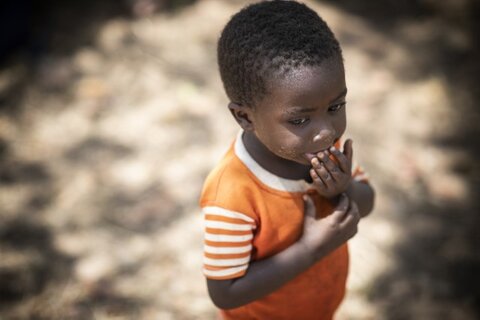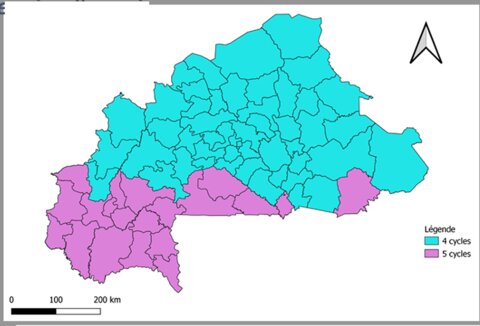
In 2023, Burkina Faso carried out five cycles of Seasonal Malaria Chemoprevention (SMC) from June to October for children aged three months to 5 years. Coverage varied from 80 to over 100 percent in certain districts, with lower coverage in districts affected by security issues. Internally displaced children were also included in the SMC program. A total of 4101 adverse drug reactions (about 0.1% of children reached) were reported, but no fatal events were recorded.
The SMC campaign also integrated malnutrition screening. By incorporating screening, the program was able to prevent the administration of Sulfadoxine-Pyrimethamine-Amodiaquine (SPAQ) to severely malnourished children at the community level. The integration of screening at a lower cost provided an opportunity to identify and treat many new acutely malnourished children during the lean period.
Additionally, SMC implementation served as an opportunity to raise awareness about mosquito breeding sites, which become more prevalent during the rainy season and are linked to malaria transmission. Getting families actively involved in destroying these sites is crucial for sustaining efforts to combat mosquito breeding.
Several important issues including ensuring timely electronic payment for community health workers, using accurate data to assess the malaria burden for planning the implementation of SMC, providing healthcare workers with training on pharmacovigilance, and providing incentives for those working in high-security risk areas were outstanding and requiring urgent attention. Furthermore, pursuing domestic financing as an additional means of funding and deciding on the right strategy for implementing SMC are important considerations.
Areas eligible for SMC and areas where SMC is implemented in 2023

SMC Coverage Information 2023 and 2024
|
|
2023 |
2024 |
|
Dates for the beginning and end of the cycle |
June -October |
|
|
Number of cycles |
5 |
|
|
Number of districts targeted |
All districts |
|
|
Number of children targeted |
4,096,899 |
|
|
Age range covered |
3 months to 59 years |
|
|
Coverage (% of targeted children reached) |
80-100% |
|
|
Were tests for the resistance to the medicines carried out? (yes/no) |
No |
|
|
Gap |
- |
- |